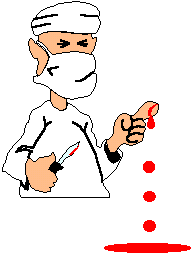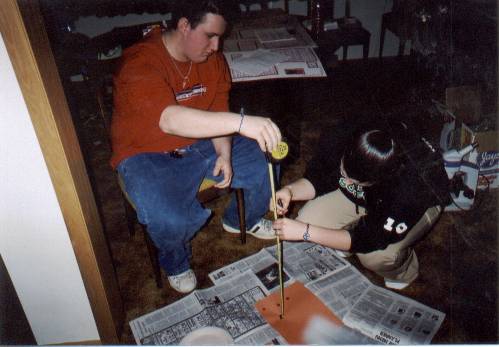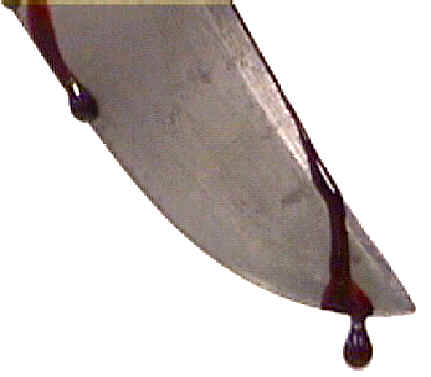 | Gold Award: Crime Scene Investigation: What it takes to be a Forensic Scientist |
| The Idea | Gold Award Application | Becoming a Crime Scene Investigator | What is Crime Scene Investigation? | Ride Along | Bloodstain | Trace | Firearms | Fingerprints | DNA | Other cool web pages | About me! | |
| Bloodstain | |
|
Bloodstain Pattern Analysis: is the examination of the shapes, locations, and distribution patterns of bloodstains, in order to provide an interpretation of the physical events which gave rise to their origin.
Violent crimes often result in bloodshed, which may leave bloodstains at the scene as well as on clothing, weapons or other objects. An expert in the bloodstain field can provide valuable insight into the events that occurred at a crime scene. The position and movements of the victim at the time of the bloodletting can usually be determined. Bloodstains on clothing can help determine the position of the person who was wearing that clothing at the time of bloodshed. Sometimes a complete reconstruction of the crime is possible. Bloodstain evidence can also refute or support statements given to police by witnesses or the accused. |
|


